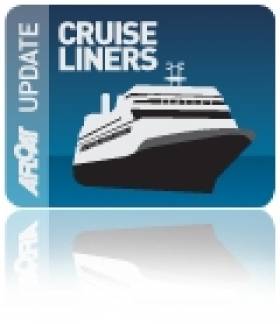Displaying items by tag: Inside harbour call
#CruiseHarbour – Island Sky, the first cruiseship to dock inside Dun Laoghaire Harbour this season had requested tug assistance in preparation to berthing within the port this morning, writes Jehan Ashmore.
Overnight, the Italian built vessel with a 116 passenger capacity had sailed from Waterford city quays and upon arrival in Dublin Bay had picked up a pilot from a cutter launch around 07.30.
For around the next two hours Island Sky circled the centre of the bay before Beaufort, a Dublin Port Company tug came on the scene to escort the 4,200 tonnes vessel into Dun Laoghaire Harbour.
The requirement of the tug was understood to be precautionary due to strong winds expected inside Dun Laoghaire Harbour during the berthing of the 90m Island Sky.
It transpired the Island Sky managed to moor alongside the harbour's Carlisle Pier opposite the East Pier using her own power alone that included a bow-thruster. This avoided the services of Beaufort which saw the tug remain in attendence at close proximity.
As Island Sky came astern at Carlisle Pier a fleet of awaiting coaches were there to transport passengers to Malahide Castle. Also heard on the PA system on board the Noble Caledonia operated cruiseship was the option to take a trip into Dublin using the DART railway whilst others simply strolled to the nearby attractions of Dun Laoghaire.
Following today's shore excursion, passengers will be returning to the Island Sky which has accommodation in the form of 57 suites all with outside views and located over five decks. On the Erikson and Explorer decks these suites feature private balconies.
Asides Island Sky's call, the Dun Laoghaire Harbour Company have a further three similar 'harbour' calls scheduled but by another pair of cruiseships. Star Legend is to call twice with an interim visit by Wind Surf. The sail-assisted cruiseship has been the most frequent in port caller of recent years.
In total 18 cruiseships are due this year with the majority of the larger and deep draft cruiseships having to anchor offshore with passengers tendered ashore by launches.























